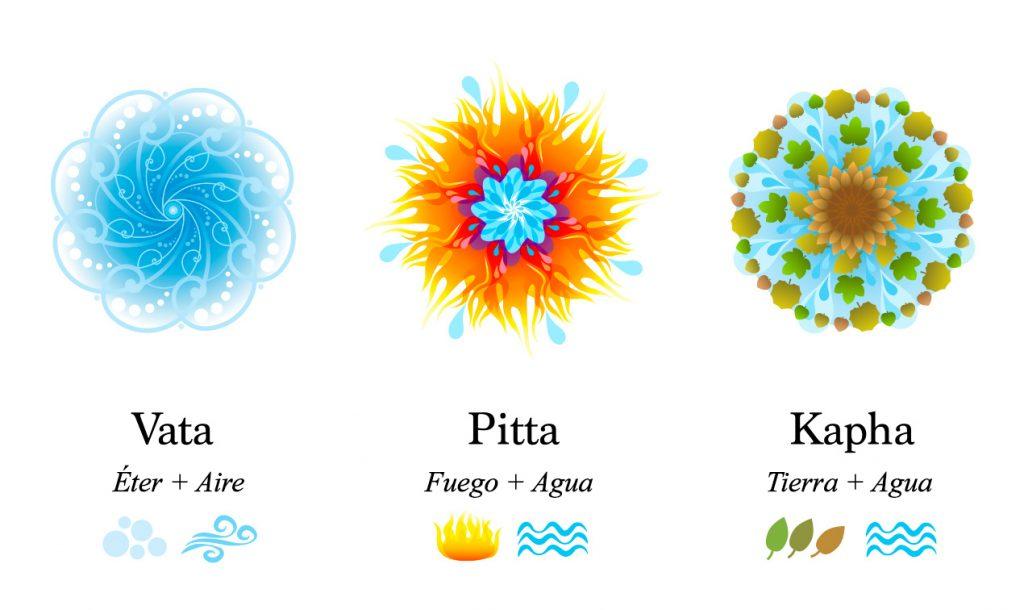Ayurveda

What is Ayurveda?
To understand what Ayurveda is, we can start by pointing out that it is the most important traditional medicine of India. Its ancient origins place it as the oldest holistic medicine. Beyond that status, today it is a living science that is taught in universities and enjoys official status in the Asian country. Its ability to interpret life without geographical or temporal limitations is remarkable.
This ancestral medicine and food with more than 5,000 years facilitates the application of nature’s resources while respecting the uniqueness of each patient. After a personalized assessment, the professional establishes a treatment based on nutrition, phytotherapy, wave therapy and Ayurvedic massage, meditation, yoga and even chanting, in order to maintain or restore the balance between mind, body and spirit.
DOSHAS
In Ayurveda, each of us has a unique mind-body type, known as a dosha. Think of a dosha as your individual blueprint that describes your unique personality, tendencies and physical nature. Understanding your dosha reveals how to stay in balance to stay happy, healthy and disease-free.
The word dosha literally means: “energy.” The three doshas are:
Vata = Aire
Pitta = Fuego
Kapha = Tierra
The Three Doshas

VATA
Composed of ether and air. Means “that which moves things”. Qualities dry, light, cold, rough, hard, subtle, clear, mobile. Site in the body colon, thighs, hips, ears, bones and organs of touch
How to balance Vata
Favor warm, moist and cooked foods. Favor sweet, sour and salty tastes. Massage every day with vata balancing oil, sesame oil or almond oil. Establish consistent daily routines, including regular meals, exercise, meditation and sleep/wake times. Avoid erratic schedules, stimulants, cold and dry conditions, excessive travel and excessive sensory stimulation from smart phones, television and tablets.
PITTA
Composed of fire and water. Means “that which digests things”. Qualities oily, pungent, pungent, hot, light, unpleasant odor, spreadable, liquid. Site in the body small intestine, stomach, sweat, sebaceous glands, blood, lymph and organs of vision
How to balance Pitta
Prefers foods that are nutritious, refreshing and not overheated. Favor sweet, bitter and astringent tastes. Keep the body cool as much as possible, avoid overheating. Incorporate regular moderate, non-competitive exercise. Avoid stimulants and acidic foods. Include meditation, nature walks or time for self-reflection and self-care in your daily routine as much as possible.
KAPHA
Composed of earth and water. Means “that which holds things together”. Qualities cold, wet, heavy, dull, opaque, sticky, soft, stable, solid, smooth. Site in the body chest, lungs, throat, head, sides, pancreas, stomach, lymph and fat.
How to balance Kapha
Prefers light, warm and cooked foods. Favor spicy, bitter and astringent flavors. Incorporate exercise into your daily routine. Vary your routine from time to time. Wake up at dawn or earlier. Avoid naps during the day. Eat lighter in the morning and evening, with your largest meal at lunchtime.
Find out which Dosha you are by clicking on the link below:

Similarities between Mexico and India
Mexico was the first Latin American country to recognize India after independence and to establish diplomatic relations with India.
Mexico and India are separated by a distance of 15,085 kilometers.
Mexico is a densely populated country with 124,574,792 million inhabitants; however, India with 1,281,935,872 million inhabitants is the second most populated country in the world.
The main thing we Mexicans have in common with India is something as much as the food itself, how much we love to be spicy. Indians and Mexicans share our eternal love for chili!
Did you know where our beloved China Poblana comes from? The story goes that back in 1621 an Indian woman named Mirra arrived in Mexico, specifically in the state of Puebla, and when she said she came from Asia, everyone called her China. She, feeling nostalgic for her homeland, bought brightly colored fabrics, adorning them with sequins, beads, etc. Little by little, Mexican women began to like these clothes more and more, until in times of the revolution, they were well adopted by the traditional Mexican culture.
By 3000 B.C. and 3300 B.C. onwards, Mexico and India shared something else, the belief in various deities to which they attributed natural phenomena and certain attributes of animals. An example of this is that each civilization had its own god of each natural element. While for India Agni was their god of fire, the Aztecs considered Xiuhtecuhtli the god of fire, day and heat.
Chalchiuhtlicue was an important goddess in Aztec mythology. As the goddess of water, she was vital to all aspects of life. Without her, both crops and humans would die of thirst. In Hindu mythology, Varuna is considered the god of all forms of water elements, particularly the oceans.

